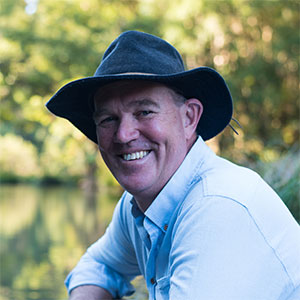Catchment runoff carrying loads of nutrients and sediments is a major threat to the health of the Great Barrier Reef (GBR). About 900,000 dump trucks of dirt flows out to the Reef on average each year.
Eureka Prize-winning scientists from Griffith University demonstrated that ‘hot spots’ of erosion activity affecting the water quality of the GBR can be identified and remediated, resulting in a significant shift in federal and state government policy and practice.

Associate Professor Andrew Brooks
The Catchment Sediment Budget Research Team, led by Associate Professor Andrew Brooks, identified gully erosion as the main human-accelerated source of sediment and nutrient source in Cape York’s Normanby catchment, the fourth-largest catchment draining to the GBR.
“The work has informed $60 million of investment into the reef including grazing land and gully remediation,” said Dr Kevin Gale, Assistant Director, Reef Branch, Australian Government Department of Environment and Energy.
The research also provides the scientific underpinning for a market-based water quality strategy. Known as Reef Credits, this new approach, akin to Carbon Credits, is now being trialled in GBR catchments.
Brooks and his team demonstrated that bank and gully erosion due to over a century of cattle grazing contributes more than 90 per cent of sediment loads to the GBR in many catchments, while hillslope erosion contributes less than 10 per cent. Managing hillslope grass cover used to be the primary focus of management agencies before these findings – the discovery has changed this practice with much greater focus on the direct rehabilitation of gully and stream bank erosion.
One of the significant impacts of this research was the Queensland Government’s purchase of the Springvale cattle station in Cape York for rehabilitation. Comprising 2.3 per cent of the catchment, this property had been producing approximately 40 per cent of the gully sediment feeding into the northern end of the GBR.
The Queensland and Federal Governments have established ambitious targets to improve the water quality of the GBR over the next decade, with reduction targets of 80 per cent for nutrients and 50 per cent for sediment by 2025.
The team’s input has been vital for “planning on-ground works, promoting the need for on-ground work, and promoting the issue of sediment management and
awareness about doing something about gully erosion”, said Will Higham, Program Manager of the Cape York Natural Resource Management Group.
